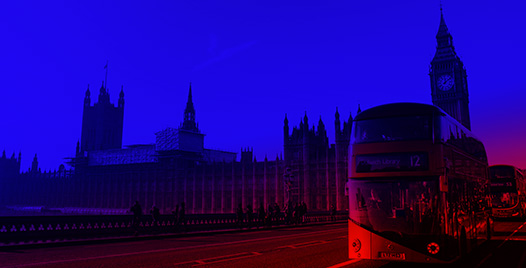
Decoding Structural Disadvantage, Simplified
We hear the term ‘structural disadvantage’ a lot. Because of so called structural disadvantage we are encouraged to ‘take the knee’, to see the consequences of structural disadvantage in terms linked to race or maybe some other identity.
Do people including politicians really understand structural disadvantage? You know, what the term really means. and how do they prove its existence? If asked, most will tell you it is about discrimination. This seems odd given that state organisations ‘the state structure’ is very keen to be ‘inclusive’ and ‘anti-discriminatory’. The idea therefore that the state and nation are complicit in discriminating against minorities seems a little farfetched. The law prohibits discrimination and backs this up with sanctions for discriminating. So where does the evidence come from that structural disadvantage exists and discriminates, and its racial.
It is certainly the case that people who are black or from other minority groups suffer the effects of structural disadvantage and when that happens is easy to call it racial discrimination thus linking structural discrimination to race alone. This does seem to be a habitual tick of the authoritarian left wing, perhaps because it provides a stick with which to beat the so-called right wing ‘establishment’. After all racial or not, structural disadvantage is maintained by the state establishment but that includes the past left wing ‘Blairite’ establishment too. Therefore, we must ask is structural disadvantage about more than racial identity, is it more about social class irrespective of race?
By making the claim that structural disadvantage is race based and imploring us all to take the knee in support of the disadvantaged black community, we ignore the fact that many other people who are not from ethnic minorities suffer structural disadvantage too, poor white people for example. By putting the emphasis on race as opposed to class, it allows the political establishment to maintain the class system based on wealth and privilege whilst they blame poor, white people for both their own structural disadvantage and the structural disadvantage of the black community. This is because structural disadvantage, or so the narrative goes, only affects black people. and can’t possibly affect white people because they might be poor and excluded but they are also white.
By claiming the effects of structural disadvantage are only linked to the colour of a person’s skin the establishment neutralise legitimate demands to tackle structural disadvantage and exclusion. If its all about race according to the privileged elite, we should just tackle racism.
So, if we accept that structural disadvantage is not just about race but is about disadvantage to some black people within the wider class of disadvantaged individual’s we need to find a more complex way of describing it. The idea it is about race is simply not adequate as structural disadvantage traps people of every ethnic group.
So, what are the mechanics of structural disadvantage then? Well, we could all come up with some ideas, welfare systems that act like traps rather than safety nets, poor education systems that do not raise aspiration, or maybe it is to do with aspiration versus entitlement. Anyone familiar with ‘posh’ people knows how super confident they are, regardless of actual ability.
None of these is sufficient to explain why once people slide down the social and economic system they too often slide out and struggle to get back in. They become demotivated and maybe even criminal. Tackling the consequences of structural disadvantage in the way Tony Blair did with the repot by the poverty commission identifying housing, drug and alcohol misuse or thinking and behavioural deficits has not resulted in the number structurally disadvantaged decreasing. The numbers still climb up. Ok so what does explain structural disadvantage?
Firstly, we have a culture, still beholden to principles like just desserts, or you get what you deserve. This means that we do not really think failure is created by society and disadvantage imposed intergenerationally based on class, we typically view failure as a personal thing, and the consequences deserved. On this basis those who fail can only blame themselves.
Strangely so established is this belief that it works with the rich too as we see those who succeed as being responsible for their success, even if their advantage is inherited, someone like Donald Trump for example. Failure is therefore not seen as arising from inherited disadvantage, but personal failure with a lot of justified adverse consequences to boot. Without being made aware of the mechanics of this process we are all prone to accept. We praise the children of famous people who become famous themselves and have ‘puff’ pieces published in the Sunday Times, and yet we can’t accept failure has a similar origin, so we condemn the failures and believe they should get their ‘just desserts’.
So in our western world, each of us gets our ‘just deserts’. In the criminal justice system, we do not understand why the petty offender has never risen above crime. It is the just deserts imposed on them by a society that believes they deserve to be at the bottom of the pile.
To add to the problems created by a general and widespread feeling about the trappings of success and failure being deserved we have another principle that adversely affects the chances of those at the bottom of societies pile and that principle is the principle of lesser eligibility.
There has been some attempt made to mitigate the hard application of this Victorian principle. The welfare system dovetails a little better to support those who undertake at least some work but in respect of the unemployed, the reality is different. Local housing allowances make it impossible to escape the welfare trap once homelessness becomes a feature of your exclusion. The whole system is structured to ensure that the poor who are right at the bottom of the social pile are rarely able to escape welfare. There are homelessness charities that need a ready supply of ‘clients’ to justify their existence. The interplay of housing welfare and general welfare is the most powerful example of ‘structural disadvantage’. Rather than levelling down, we pretend we can lift these people up. In the current system we cannot, we lift up their ‘helpers’. Even Michael X the notorious black activist come drug dealer noted this point.
Finally, the last and most invisible form of structural disadvantage we at Blue Revolution call the bureaucratisation or managerialsing of leadership. In effect, the leaders we select are selected based on how well they operate within the impersonal world of the bureaucracy. The bureaucracy has a kind of ‘humanity’ built into it, but it is in the form of appraisals, reward and recognition.
The language of bureaucracy is structurally disadvantaging of all those who for whatever reason do not possess the language, behavioural and educational codes that gain access to this system. Whatever we term these people, outcasts, failures, ‘mavericks’ or outsiders, they are overrepresented within the minority ethnic and other groups. It would be easy to say that the system was at fault, but the ‘liberal types’ who control the system would not accept that to be the case. ‘General racism’ is given as the cause and we are all encouraged to take the knee’ or to blame white history but never to identify the bureaucratisation of leadership, particularly guilt afflicted white leadership as the problem. To correct this, we simply need to do the same thing we do with all the forms of structural disadvantage, we level down, trust people to make the right choices about who they want as their leaders and stop pandering to the idea we can level up or the state and its bureaucratic apparatus is neutral, inclusive and fair. It is not.

